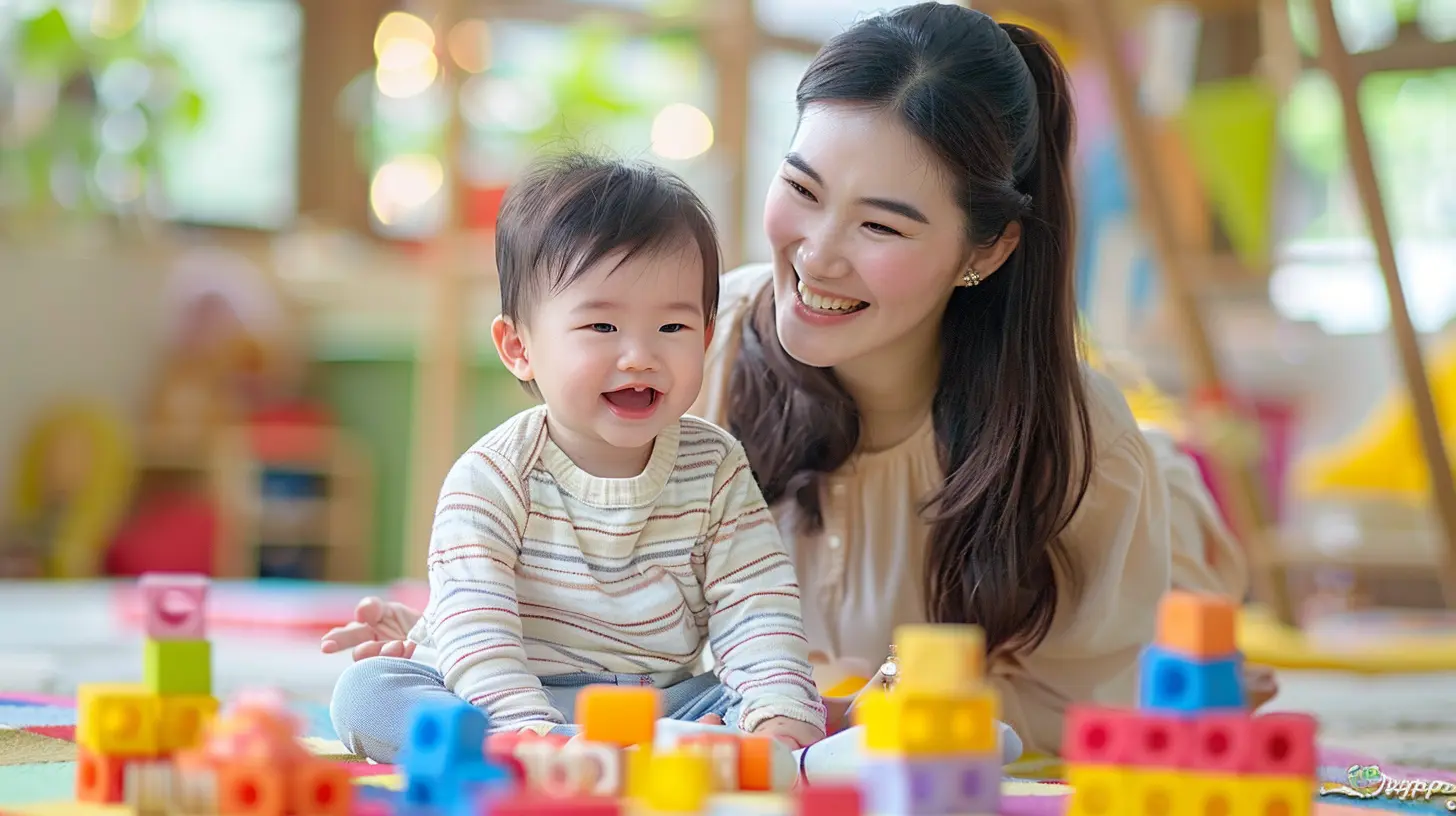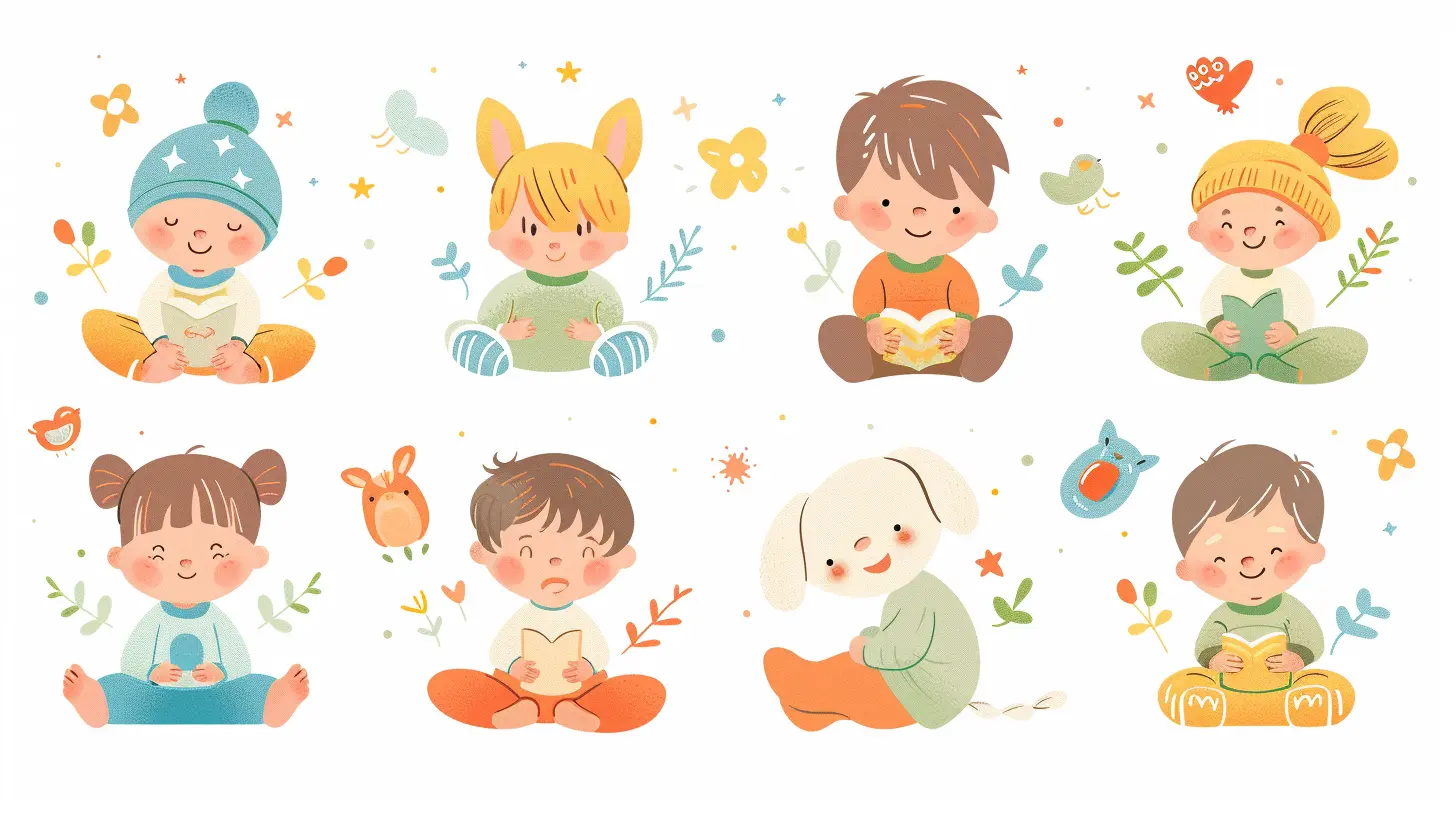Language Development in Babies: What to Expect Month by Month
4 October 2025
From the moment your baby is born, they start absorbing the sounds and rhythms of language. It’s an incredible journey—watching your little one go from cooing to babbling and eventually saying their first words. But how exactly does this process unfold? Let’s break it down, month by month, so you know what to expect and how you can encourage your baby’s language development along the way.

The First Year of Language Development
Newborn to 1 Month: The First Sounds
In the first few weeks, your baby isn’t saying much—at least, not in words. Instead, they communicate through cries, coos, and grunts. Believe it or not, these little sounds are the first steps in language development.- Your baby recognizes your voice from the womb, so talking and singing to them helps reinforce that bond.
- They start making random noises, mostly cooing and grunting, as they test out their vocal cords.
- Crying is their main way of communicating—whether they’re hungry, tired, or just need a cuddle.
How You Can Help:
- Talk to them often. Narrate your day, tell them stories, or simply chat about what you're doing.
- Respond to their cries and coos. This teaches them that communication is a two-way street.
2 to 3 Months: The Cooing Stage
At this stage, your baby starts making more intentional sounds. You’ll notice them cooing, gurgling, and experimenting with their vocal range.- They produce vowel-like sounds such as “ahh” and “ooh.”
- They begin responding to voices with smiles and sounds, showing early signs of social communication.
- You might even hear them imitate sounds or “talk” back when you speak to them.
How You Can Help:
- Encourage conversations by responding to their coos. If they “ahh,” you can repeat it back—this mimics the natural flow of conversation.
- Use exaggerated facial expressions and varying tones to keep them engaged.
4 to 6 Months: Babbling Begins
This is when things start getting really exciting! Your baby will begin producing consonant sounds like “ba,” “da,” and “ma.” Their vocalizations become more expressive, and they might even laugh or squeal with delight.- They start experimenting with pitch and volume—sometimes babbling loudly just for fun.
- You’ll notice more turn-taking conversations; they make a sound, you respond, and they “talk” again.
- Some babies at this stage may even start recognizing their name and responding to familiar words.
How You Can Help:
- Repeat the sounds they make. If they say “ba,” say “ba-ba!” to reinforce the sound.
- Sing nursery rhymes and songs, which help introduce rhythm and new words.
7 to 9 Months: Understanding Words
By this time, your baby starts recognizing common words and associating them with meanings. You might notice them reacting when you say “no” or showing excitement when you mention their favorite toy.- They begin imitating speech patterns and may try to mimic words.
- Some babies say their first words around 9 months—often simple ones like “mama” or “dada.”
- They recognize their name and turn toward you when called.
How You Can Help:
- Start using simple words repeatedly—“milk,” “dog,” “ball”—to help them make connections.
- Read books together. Pointing at pictures while naming things strengthens their vocabulary.
10 to 12 Months: First Words and More!
By now, your baby is well on their way to talking! Their babbling may start to sound more like real speech, and they’ll likely say their first words (though every baby is different).- Expect words like “mama,” “dada,” and simple object names like “ball” or “bye.”
- They use gestures like pointing or waving to communicate.
- Their understanding of language outpaces their ability to speak. They might follow simple commands like “come here” or “give me the toy.”
How You Can Help:
- Encourage their first words by repeating them frequently in conversation.
- Celebrate their attempts at talking! Even if they don’t say words perfectly, showing excitement boosts their confidence.

The Second Year: Expanding Vocabulary
12 to 18 Months: More Words and Simple Phrases
Your toddler’s vocabulary starts expanding rapidly. By 18 months, they might have around 10–20 words, though some may have more or fewer.- They begin pointing to objects and naming them.
- Simple two-word phrases start forming, like “want milk” or “big dog.”
- Language comprehension grows—they understand far more words than they can say.
How You Can Help:
- Offer choices to encourage speech: “Do you want an apple or a banana?”
- Keep the conversation going, even if they’re only saying one word at a time.
18 to 24 Months: Sentence Formation Begins
Between 18 and 24 months, toddlers start stringing words together into short sentences. Their vocabulary might jump to 50–100 words or more!- They can follow simple instructions like “bring me the toy.”
- They start using pronouns like “me” and “mine.”
- You might notice a language explosion—new words come almost daily.
How You Can Help:
- Encourage storytelling by asking open-ended questions like, “What did you do today?”
- Avoid baby talk—use clear, proper words to model correct language.

When Should You Be Concerned?
Every child develops at their own pace, but if you notice any of the following, it might be worth discussing with a pediatrician:- No response to sound or their name by 6 months.
- No babbling or vocalizations by 9 months.
- No words by 12–15 months.
- Difficulty understanding simple instructions by age 2.
Early intervention can make a big difference, so if you’re worried, don’t hesitate to seek advice.

Final Thoughts
Language development in babies is an incredible process filled with surprises and milestones. While some babies start talking earlier than others, what matters most is consistent engagement—talking, reading, singing, and responding to their sounds. Every “goo goo” and “ba ba” is a step toward their first real words, so cherish every moment of this adorable journey!all images in this post were generated using AI tools
Category:
Infant DevelopmentAuthor:

Austin Wilcox
Discussion
rate this article
1 comments
Carla Edwards
Understanding language development month by month helps parents support their baby's communication skills effectively. Engage in conversations, read regularly, and encourage sounds for optimal growth.
October 19, 2025 at 4:32 AM

Austin Wilcox
Thank you for your insightful comment! Engaging with babies through conversation, reading, and encouraging sounds is crucial for their language development. Your support can make a significant difference in their communication skills!


